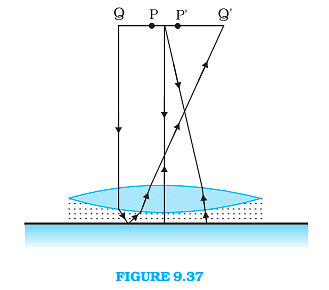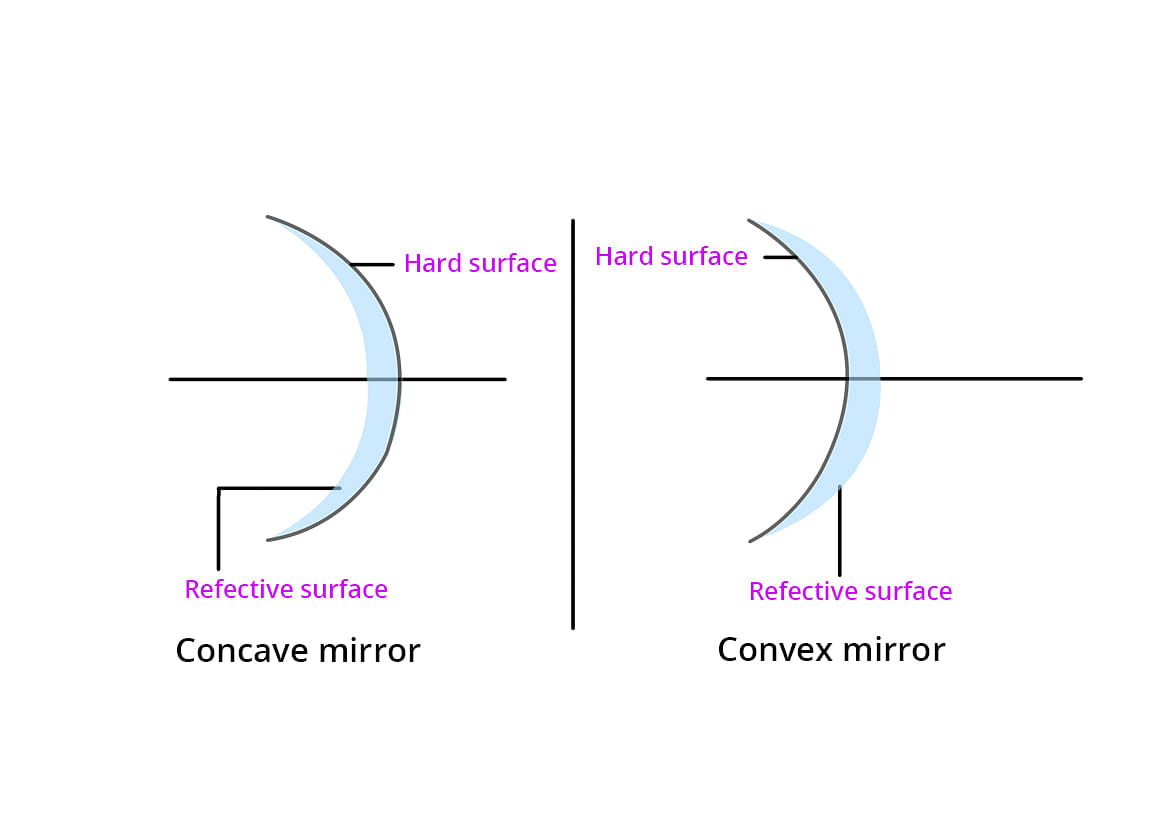Figure 9.37 shows an equiconvex lens (of refractive index 1.50) in contact with a liquid layer on top of a plane mirror. A small needle with its tip on the principal axis is moved along the axis until its inverted image is found at the position of the needle.


Solution and Explanation
STEP 1:-
In order to find the focal length of the concave lens of liquid:
The formula used will be: \(\frac{1}{f}=\frac{1}{f_1}+\frac{1}{f_2}\)
In the absence of the liquid, for the combination of the convex lens and plane mirror, the inverted image coincides with the object only when the object is placed at the focus of the convex lens. The same principle applies when the liquid is introduced between the lens and the mirror. Therefore, the given object or image distance can be considered as the focal length of the respective combinations.
When the liquid is present, the system acts as a combination of a convex lens and a concave lens. Hence, the focal length of the combination is denoted as f (let's say): f = 45 cm
When the liquid is removed, the image is formed at 30 cm.
Therefore, the focal length of the convex lens (f1) is: f1 = 30 cm
Let the focal length of the concave lens with the liquid be f2.
For a pair of optical systems in contact, the equivalent focal length is given by:
\(\frac{1}{f}=\frac{1}{f_1}+\frac{1}{f_2}\)
Putting the values, we get,
\(\frac{1}{45}=\frac{1}{30}+\frac{1}{f_2}\)
\(\frac{1}{f_2}=\frac{1}{45}-\frac{1}{30}\)
\(\frac{1}{f_2}=\frac{2-3}{90}=-\frac{1}{90}\)
\(f_2=-90\text{ cm}\)
STEP 2:-
In order to find the value of radius of curvature:
Lens makers formula: \(\frac{1}{f}=(n_{21}−1)(\frac{1}{R_1}−\frac{1}{R_2})\)
Let the refractive index of the lens be n1,
and the radius of curvature of one surface be R1=R.
The radius of curvature of the other surface is R2=-R.
Using the lens makers formula,
\(\frac{1}{f}=(n_{21}−1)(\frac{1}{R_1}−\frac{1}{R_2})\)
\(\frac{1}{30}=(1.5−1)(\frac{1}{R}−\frac{1}{-R})\)
\(\frac{1}{30}=0.5(\frac{2}{R})\)
\(\frac{1}{30}=\frac{1}{R}\)
\(R=30\text{ cm}\)
STEP 3:-
In order to find the refractive index of the liquid:
Lens makers formula: \(\frac{1}{f}=(n_{21}−1)(\frac{1}{R_1}−\frac{1}{R_2})\)
The radius of curvature of the liquid lens, R'1=-30 cm.
The other side of the liquid is a plane, so R'2=∞.
Let n2 be the refractive index of the liquid.
Using the lens maker's formula,
\(\frac{1}{f_2}=(n_2−1)(\frac{1}{R_1}−\frac{1}{R_2})\)
\(−\frac{1}{90}=(n_2−1)(\frac{1}{-30}−\frac{1}{∞})\)
\(−\frac{1}{90}=−\frac{1}{30}(n_2−1)\)
\(n_2−1=\frac{1}{3}\)
\(n_2=1.33\)
Hence, the refractive index of the liquid is 1.33.
Therefore, the final Answer: n=1.33
Top Questions on Ray optics and optical instruments
- Explain the transmission of optical signal through an optical fiber with a diagram.
- CBSE CLASS XII - 2025
- Physics
- Ray optics and optical instruments
- A point source of light in air is kept at a distance of 12 cm in front of a convex spherical surface of glass of refractive index 1.5 and radius of curvature 30 cm. Find the nature and position of the image formed.
- CBSE CLASS XII - 2025
- Physics
- Ray optics and optical instruments
- A thin prism \( P_1 \) with angle \( 4^\circ \) made of glass having refractive index 1.54 is combined with another thin prism \( P_2 \) made of glass having refractive index 1.72 to get dispersion without deviation. The angle of the prism \( P_2 \) in degrees is:
- JEE Main - 2025
- Physics
- Ray optics and optical instruments
A hemispherical vessel is completely filled with a liquid of refractive index \( \mu \). A small coin is kept at the lowest point \( O \) of the vessel as shown in the figure. The minimum value of the refractive index of the liquid so that a person can see the coin from point \( E \) (at the level of the vessel) is:

- JEE Main - 2025
- Physics
- Ray optics and optical instruments
- If \( \lambda \) and \( K \) are de Broglie wavelength and kinetic energy, respectively, of a particle with constant mass. The correct graphical representation for the particle will be:
- JEE Main - 2025
- Physics
- Ray optics and optical instruments
Questions Asked in CBSE CLASS XII exam
- The principal value of \( \cot^{-1} \left( -\frac{1}{\sqrt{3}} \right) \) is:
- CBSE CLASS XII - 2025
- Inverse Trigonometric Functions
- Why does M. Hamel refer to language as a key to freedom from slavery? (The Last Lesson)
- CBSE CLASS XII - 2025
- The Last Lesson
- Bama and Zitkala-Sa have proven that education is the antidote to all social evils. Analyse their characters in terms of their struggles and their will to win. (Memories of Childhood)
- CBSE CLASS XII - 2025
- Literature
“One of these days you’re going to talk yourself into a load of trouble,” her father said aggressively. What do you learn about Sophie’s father from these lines? (Going Places)
- CBSE CLASS XII - 2025
- Literature
- (b) In a village of 8000 people, 3000 go out of the village to work and 4000 are women. It is noted that 30% of women go out of the village to work. What is the probability that a randomly chosen individual is either a woman or a person working outside the village?
- CBSE CLASS XII - 2025
- Probability
Concepts Used:
Spherical Mirrors
A spherical mirror is a mirror which has been cut out of a spherical surface.
There are two kinds of spherical mirrors:
- Convex Mirror
- Concave Mirror

Concave Mirror
Concave mirrors are also called converging mirrors, because in these types of mirrors, light rays converge at a point after impact and reflect back from the reflective surface of the mirror.
Convex Mirror
The convex mirror has a reflective surface that is curved outward. Regardless of the distance between the subject and the mirrors, these mirrors are "always" virtual, upright and reduced.